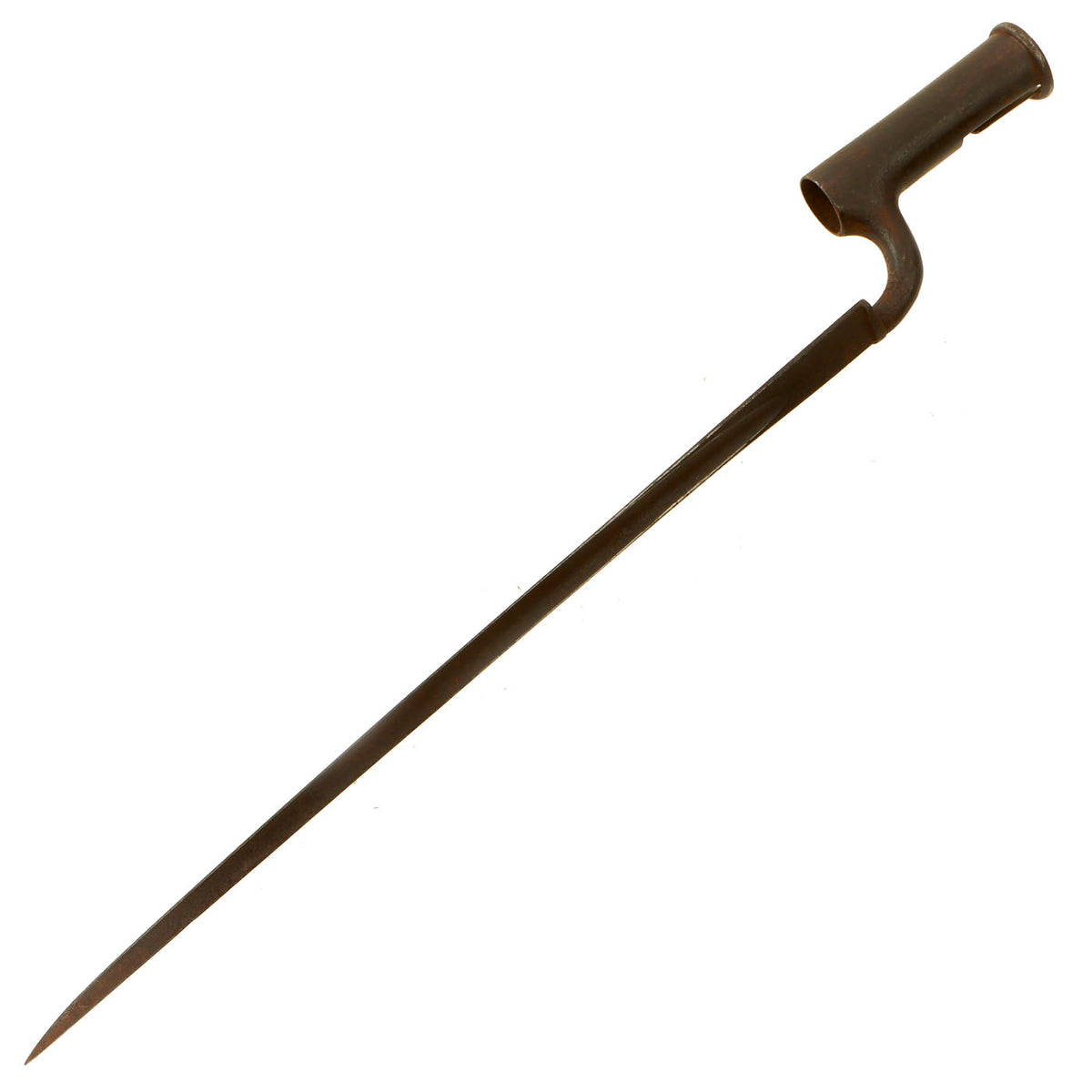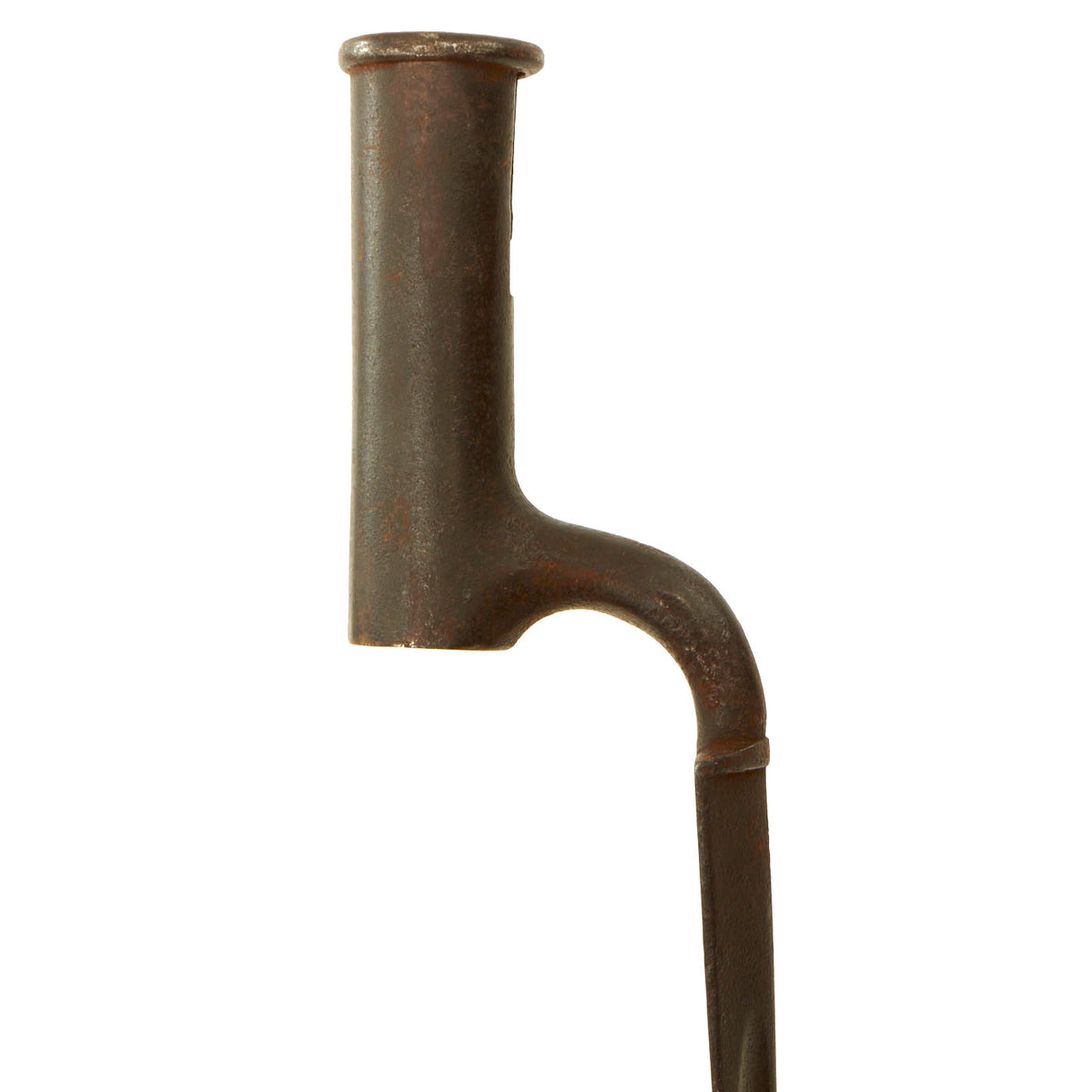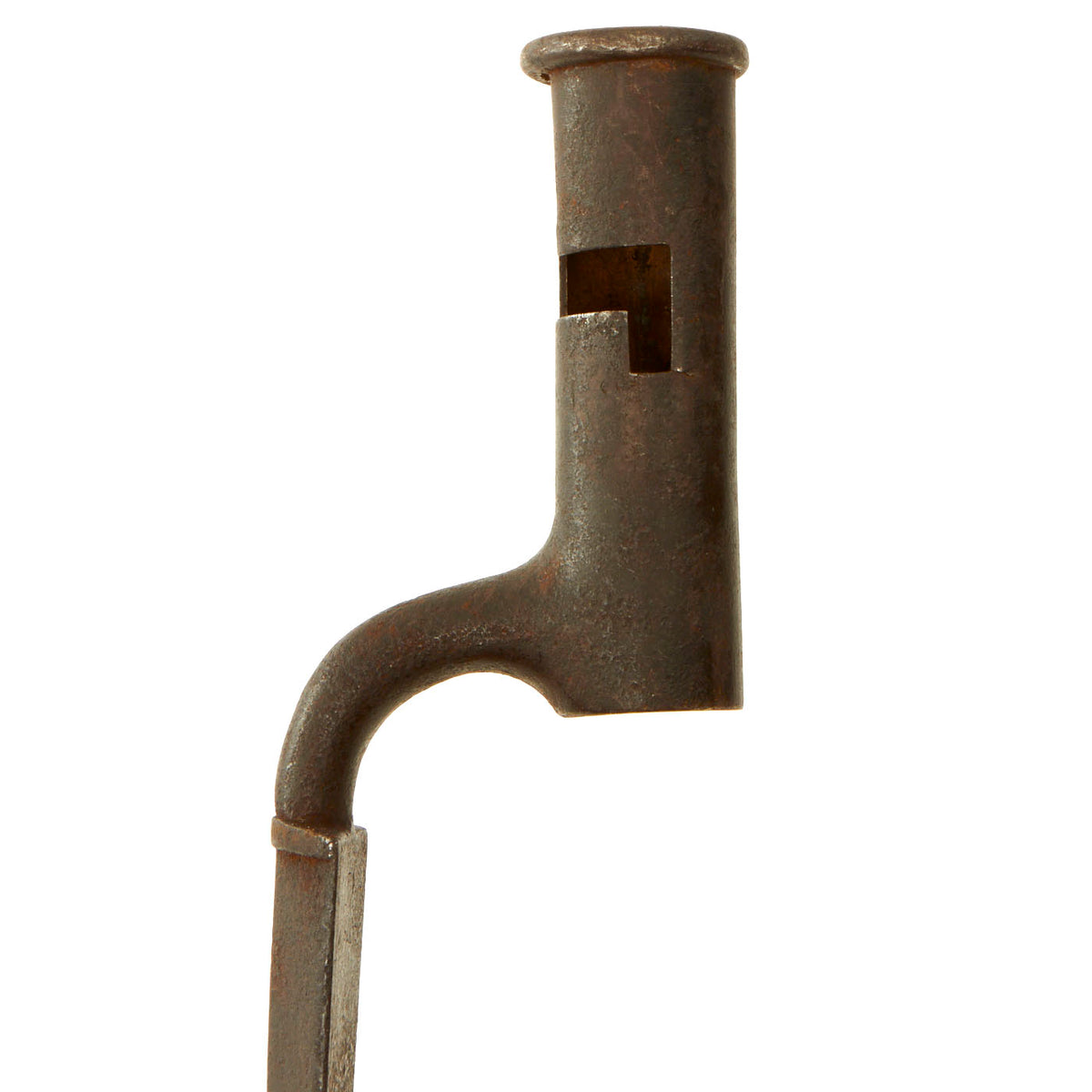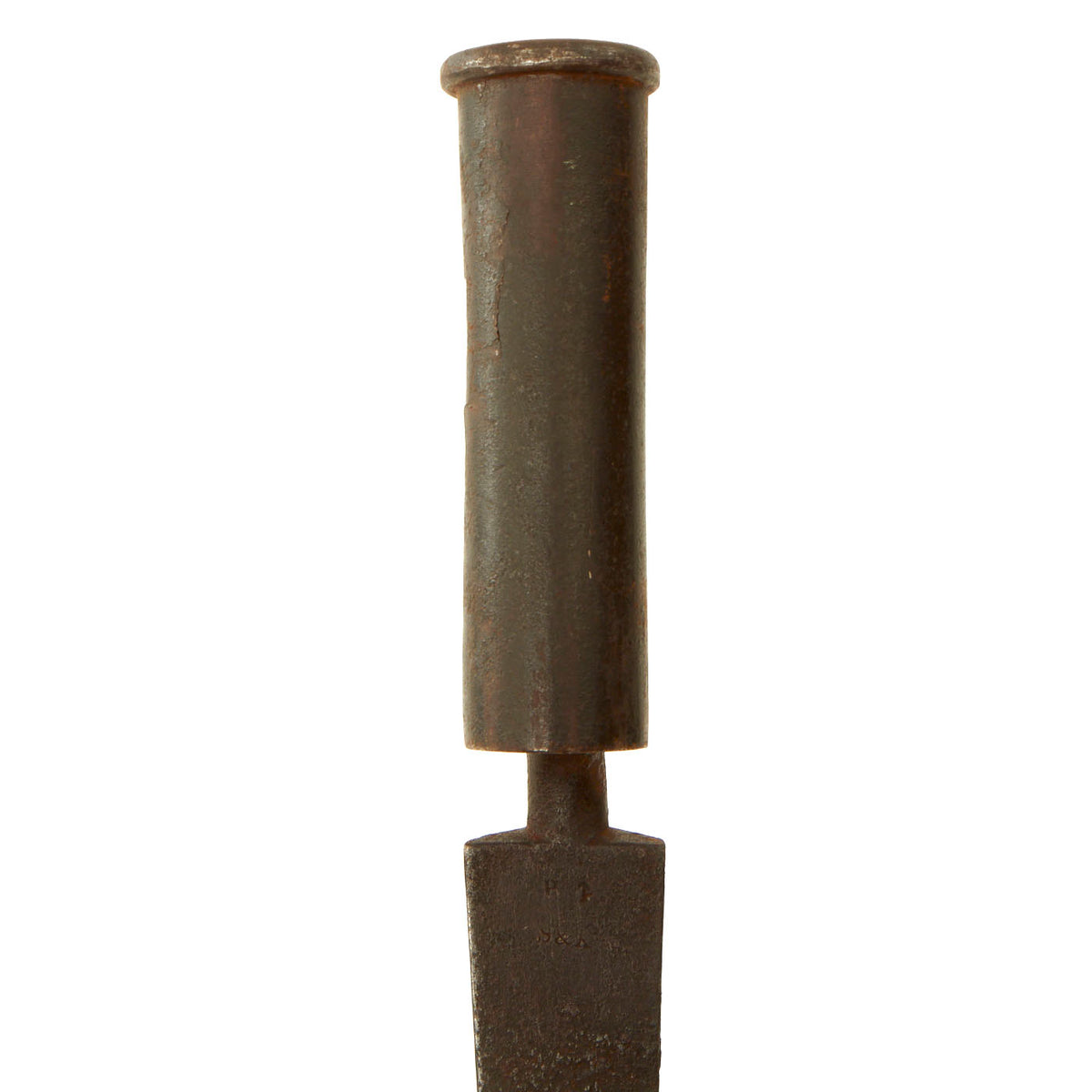Original 18th/19th Century British Made Land Pattern Brown Bess Socket Bayonet Original Items
$ 395,00 $ 118,50
Original Item: Only One Available. The Land Pattern musket was introduced in 1722. Both the musket and its bayonet evolved over time, until superseded by the India Pattern at the close of the 18th Century.
This example is of the Pattern 1727, and likely dates from the late 18th Century. Distinguishing characteristics include: a wide blade, with a concave face and prominent circular guard. Elbow is flush with the socket front and extends well-forward of the socket. There are multiple markings on the “ricasso” area of the blade and appears to be P.P. / S.K. The first marking is rather faint and partially incomplete making it difficult to identify the manufacturer.
A lovely Revolutionary War era British made bayonet ready for further research and display.
“Brown Bess” is a nickname of uncertain origin for the British Army’s muzzle-loading smoothbore flintlock Land Pattern Musket and its derivatives. The musket design remained in use for over a hundred years with many incremental changes in its design. These versions include the Long Land Pattern, the Short Land Pattern, the India Pattern, the New Land Pattern Musket and the Sea Service Musket.
The Long Land Pattern musket and its derivatives, all 0.75 inch caliber flintlock muskets, were the standard long guns of the British Empire’s land forces from 1722 until 1838, when they were superseded by a percussion cap smoothbore musket. The British Ordnance System converted many flintlocks into the new percussion system known as the Pattern 1839 Musket. A fire in 1841 at the Tower of London destroyed many muskets before they could be converted. Still, the Brown Bess saw service until the middle of the nineteenth century.
Most male citizens of the thirteen colonies of British America were required by law to own arms and ammunition for militia duty.[5] The Long Land Pattern was a common firearm in use by both sides in the American War of Independence.
In 1808 during the Napoleonic Wars, the United Kingdom subsidized Sweden (during the Sweden–Finland period) in various ways as the British government anxiously wanted to keep an ally in the Baltic Sea region. These included deliveries of significant numbers of Brown Bess-muskets for use in the Finnish War of 1808 to 1809.
During the Musket Wars (1820s–30s), Māori warriors used Brown Besses purchased from European traders at the time. Some muskets were sold to the Mexican Army, which used them during the Texas Revolution of 1836 and the Mexican–American War of 1846 to 1848. Brown Besses saw service in the First Opium War and during the Indian rebellion of 1857. Zulu warriors, who had also purchased them from European traders, used them during the Anglo-Zulu War in 1879. One was even used in the Battle of Shiloh in 1862, during the American Civil War.
Fast Shipping with Professional Packaging
Thanks to our longstanding association with UPS FedEx DHL, and other major international carriers, we are able to provide a range of shipping options. Our warehouse staff is expertly trained and will wrap your products according to our exact and precise specifications. Prior to shipping, your goods will be thoroughly examined and securely secured. We ship to thousands clients each day across multiple countries. This shows how we're dedicated to be the largest retailer on the internet. Warehouses and distribution centres can be located throughout Europe as well as the USA.
Note: Orders with more than one item will be assigned a processing date depending on the item.
Before shipping before shipping, we'll conduct a thorough inspection of the items you have ordered. Today, the majority of orders will be delivered within 48 hours. The delivery time will be between 3-7 days.
Returns
The stock is dynamic and we cannot completely manage it because multiple stakeholders are involved, including our factory and warehouse. So the actual stock may alter at any time. It's possible that you may not receive your order once the order has been made.
Our policy is valid for a period of 30 days. If you don't receive the product within 30 days, we are not able to issue a refund or an exchange.
You can only return an item if it is unused and in the same state as the day you received it. You must have the item in its original packaging.
Related products
Uncategorized
Uncategorized
Armoured Fighting Vehicles of the World: AFVs of World War One (Hardcover Book) New Made Items
Uncategorized
Uncategorized
Uncategorized
Band of Brothers ORIGINAL GERMAN WWII Le. F.H. 18 10.5cm ARTILLERY PIECE Original Items
Uncategorized
Armored Burgonet Helmet & Polearm from Scottish Castle Leith Hall Circa 1700 Original Items
Uncategorized
Uncategorized
Uncategorized
Uncategorized
Uncategorized
Uncategorized
Uncategorized












































































